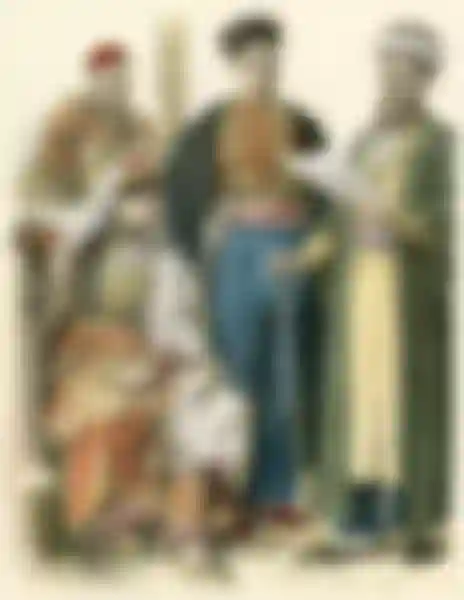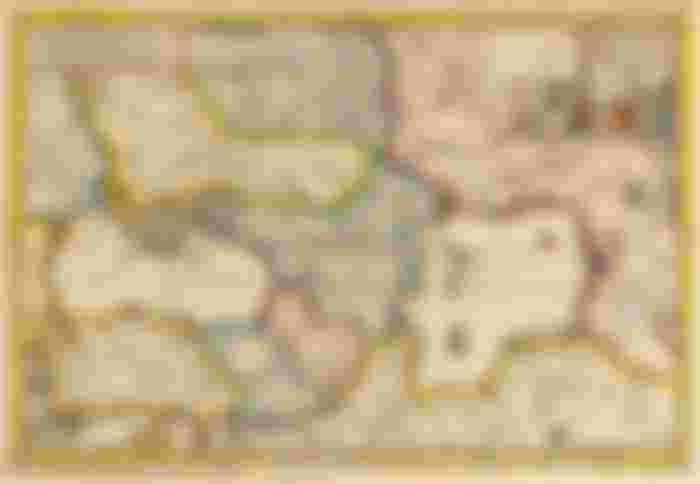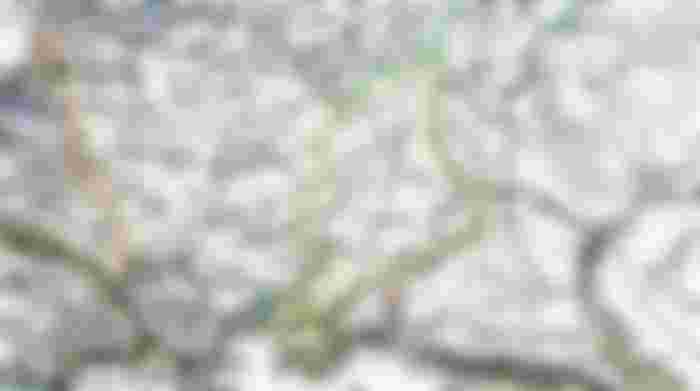Crimean Tatars
Crimean Tatars
1- Origin and origin. The Crimean Tatars are the indigenous people of the Crimean Peninsula, this beautiful peninsula on the northern shores of the Black Sea, whose area is slightly smaller than that of Albania, about 27,000 km2. Many may think that these are the Mongol Tatars, who with their hordes reached the gates of Eastern Europe. In fact, there is a connection between this designation and the Mongols. The word "Tatar" was used to describe all the constituent genera of the Golden Horde, the well-known Mongol wing that stretched as far as western Russia. This name remained even after the fall of the throne and was used for many other Turkish and Mongol tribes that populated the area of the Volga, Kazan, as far as the steppes of Siberia. The Crimean Tatars are a group of Turkish tribes who migrated to the Crimean Peninsula sometime around the 10th century e.s. In a short period of time they managed to populate most of the peninsula, against the Hellenic and Ostrogothic inhabitants (Crimean Goths, a Germanic tribe), who in time became a minority or assimilated.

2- The beginnings of Islam. Crimean Tatars are all Muslims. Their Islam started very early. The Mongol state of the Golden Horde was one of the four Mongol states which Genghis Khan himself divided among his children. The Mongol state was pagan, but Islam was very widespread among the Turkish tribes and its subjects. The most important event that further consolidated the Islamic presence in Crimea was the Islam of Berke Hani, the grandson of Genghis Hani. Berke Hani, also known as Bereke Hani in Arabic sources, not only converted to Islam, but was also the main factor in curbing his pagan cousin Hulako Hani. With the return of the Mongol state to Islam there was a great spread of Islam.
3- Establishment of the state, Kanat of Crimea. Crimea remained under the jurisdiction of the Mongol state until the 15th century. During this period the Crimean Tatars made up the vast majority of the population on the peninsula. Tatar Muslims began to expand beyond the peninsula, to the south of present-day Ukraine, which at the time was not part of Ukraine. In the 15th century, with the weakening of the Mongol state, the Crimean Tatars seceded from the mother state and established the Crimean Tatar Province. The founder of the state was Sultan Haxhi Karaji in 1441 e.s. The capital of Kanat was the beautiful city of Bahcesarai, in the center of the peninsula. Kanat was one of the most powerful states in the area. He soon took control of most of the land that lies today in southern and eastern Ukraine. In 1502 the Crimean ruler, Menli Hani, also managed to seize Sarai, the capital of the Golden Mughal State, and the eyes of the Muslim Tatars were turned to Russia, and even to Moscow itself. The first attempts did not take long. In 1507 a long series of wars known in history as the Russo-Tatar Wars began. The progress of the Muslims was initially apparent. The Duke of Moscow was forced to pay the jizya for some time. In 1570 the Muslim Tatars undertook a powerful military offensive against the city of Moscow itself. About 100,000 soldiers, including 7,000 Ottoman janissaries, managed to encircle Moscow. The battles were fierce and Moscow in 1571 falls into the hands of the Muslims, but already completely burned. For two centuries (XVI-XVII) the Tatar Muslims were superior to the Russians. But with the advent of the eighteenth century the Russians began to gain ground. Russian progress, initially slow, began to accelerate in the late eighteenth century.
4- Ottoman protectorate. At the end of the 15th century the Ottoman Turks reached the shores of Crimea. They, after capturing some of the remaining cities of the Republic of Genoa and Byzantium, agree that the Crimean Peninsula be under the protectorate of the Ottoman State. Over time the Ottoman influence strengthened and after the death of the Tatar inn Muhammad Karaj in 1525 e.s., the inn was appointed only after the approval of the Ottoman sultan. However, the Crimean province had a special status of autonomy and was independent in most policies. The main ruling family was the Karaj family (also read Garaj). The Muslims of Crimea were all Sunnis, followers of the Hanafi sect. Part of the Byzantine and Osgotian inhabitants converted to Islam. Islamic culture and civilization was heavily influenced by Ottoman architecture. Kanat was divided into administrative units called bejlik. Bejlik was ruled by the bey and he had under his rule smaller rulers called mirza. But with the reforms carried out by the last eater Shahin Karaj the Turkish model of administrative division was followed. Mirza in the Crimean province was only one governor. He was not the owner of the land, but only the ruler. The farmers were landowners and free, neither slaves nor serfs, and their relations with the mirza were purely administrative.

5- Weakening and falling. At the end of the XVIII century, mainly in the fifth Russo-Turkish (Russo-Tatar) war between 1735-39 the Russians took in hand many territories of the Tatar fold. Evlija Çelebi mentions another reason for the weakening of the wing, the attacks of the Cossacks from the east which cut off the trade routes of the wing. Another factor that directly influenced the weakening of the state were also some internal clashes between Tatar families for power After 1770, Russian attacks increased. In the period of Catherine II, in 1774, an agreement was signed which forced the Crimean Kanat to secede from the Ottoman State. The last ruler of Kanat, Shahin Karaj was dictated by the Russians. After several internal revolts the Russian Empire managed to annex the entire peninsula. Ruler Shahin Karaj Hani fled to Turkey where he was later executed on the island of Rhodes on charges of treason. After the fall of the peninsula the Russians took revenge. They had already turned into a fearsome and powerful empire. After the Treaty of Jasa (1792) and especially after the Treaty of Bucharest (1812), according to which the Ottoman State lost the rule of Buxhak, the Russian Empire further consolidated its occupation of Crimea and surrounding areas.
6- Crimea during the rule of the tsar. In the early 19th century Tsarist Russia began a Slavicization of the area, mainly the northern areas of Crimea, outside the peninsula. The Russification of the area was slow at first, but then accelerated. Part of the Muslims moved inside the Crimean Peninsula. The peninsula itself continued to maintain Muslim dominance. By the 1850s the overwhelming population of the peninsula, over 80%, was made up of Tatar Muslims. The process of Slavization of the peninsula accelerated in the second half of the XIX century. According to official Russian statistics of 1864, Tatars made up 50% of the population, while in 1897 they made up 35% of the population. The number may have been even higher, given the declining trend in the real number in official statistics. Various forms of discrimination and injustice were inflicted on Muslim Tatars. A good part of them were forced to leave the country and move to Turkey, Bulgaria (present-day Tatarstan) or to Arab countries, where they are usually confused with the Circassians, due to their proximity.
7- Bolshevik rule and expulsion from Crimea. The Bolsheviks not only continued the discriminatory policies that came to power in 1917, but even toughened them. In the mid-1930s the Tatar population declined dramatically. Tatars with 220,000 inhabitants made up only 20% of the peninsula's population. The process known for the Ukrainianization of the area had just begun. With the end of World War II and the return of the Soviet yoke the remaining Tatar inhabitants were forced to move en masse from Crimea. Joseph Stalin accused the Tatars of collaborating with the Nazis, and in just three days, May 18-20, 1944, some 200,000 remaining Tatars were forcibly deported to Uzbekistan. The persecution was very inhuman. About 13,000 people died as a result of the deportation. Other researchers give even higher figures. The Tatars settled in places very different from their own country, more akin to concentration camps. Only 3,000-4,000 Tatars, members of the Communist Party and loyal to Stalin remained in Crimea. Their place was taken by Russians and mainly Ukrainians coming from the north. After the Khrushchev-era administrative redistribution in the 1960s, the Crimean Peninsula passed to the Socialist Republic of Ukraine, and the Ukrainian population began to grow.
8- Return to Crimea. With the weakening of the Soviet Union in the 1980s, the first conditions were created for the return of many Tatars. About 40,000 Tatars returned to Crimea, mostly to mountain villages in the center of the peninsula. In fact returns to small numbers began earlier, but until 1989 Crimean Tatars were denied the right to declare themselves as such. With the collapse of the Soviet Union, there was a massive return of Tatars to Crimea from Uzbekistan and other republics. In the early 1990s, some 200,000 Tatars returned to Crimea. The comeback continued even later, but at a slower pace. The recovery process did not go smoothly. The main problem was obtaining Ukrainian citizenship for indigenous returnees. The Ukrainian authorities pursued a policy of harassment and bureaucracy, the main purpose of which was to curb the return of Muslim Tatars to their lands.
9- Current situation. Crimea again fell into Russian hands after the events of 2014. It was declared an Autonomous Republic with special status directly dependent on the Kremlin. Authorities put the figure at about 300,000. Both Russian and Ukrainian authorities have never given an exact figure for the number of Tatars in Crimea. In reality their number is larger and ranges between 500-600,000 inhabitants concentrated in the rural and central areas of the peninsula and currently make up about ¼ of the population. It should be noted that a considerable number of Crimean Tatars, about 300-400,000 continue to live in Uzbekistan and in smaller numbers in the Russian republics, mainly in Tatarstan. A large number of them live in Turkey, some of whom have preserved their Tatar identity to some extent.

©️Wondernature
📷 In the photo The Crimean Peninsula and the Crimean fold in the century. XVI and XVII.


